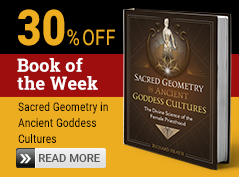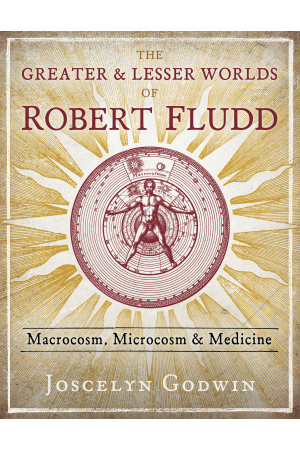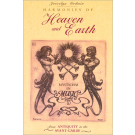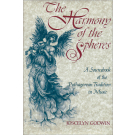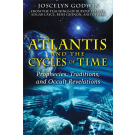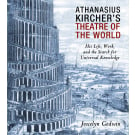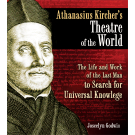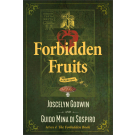The Greater and Lesser Worlds of Robert Fludd
Macrocosm, Microcosm, and Medicine
By (Author) Joscelyn Godwin
Availability:
In Stock
- Pages: 272
- Book Size: 8.5 x 11
- ISBN-13: 9781620559499
- Imprint: Inner Traditions
- On Sale Date: December 17, 2019
- Format: Hardcover Book
- Illustrations: 201 b&w illustrations
One of the last true Renaissance men, physician, alchemist, and inventor Robert Fludd (1574-1637) wrote a series of books, filled with hundreds of detailed engravings, now recognized as the first fully illustrated encyclopedia. In this hardcover, highly illustrated reference, Joscelyn Godwin explains Fludd’s theories on the cosmos, man, and medicine.
An illustrated reference book on a seminal figure of occult philosophy and Renaissance thought
• Explains Fludd’s thoughts on cosmic harmonies, divination, the kabbalah, astrology, geomancy, alchemy, the Rosicrucians, and multiple levels of existence
• Includes more than 200 of Fludd’s illustrations, representing the whole corpus of Fludd’s iconography, each one accompanied by Godwin’s expert commentary
• Explores Fludd’s medical work as an esoteric Paracelsian physician and his theories on the macrocosm of elements, planets, stars, and subtle and divine beings and the microcosm of the human being and its creative activities, including material never before translated
One of the last Renaissance men, Robert Fludd (1574-1637) was one of the great minds of the early modern period. A physician by profession, he was also a Christian Hermetist, a Rosicrucian, an alchemist, astrologer, musician, and inventor. His drive to encompass the whole of human knowledge--from music to alchemy, from palmistry to fortification--resulted in a series of books remarkable for their hundreds of engravings, a body of work recognized as the first example of a fully-illustrated encyclopedia.
In this in-depth, highly illustrated reference, scholar and linguist Joscelyn Godwin explains Fludd’s theories on the correspondence between the macrocosm of elements, planets, stars, and subtle and divine beings and the microcosm of the human being and its creative activities. He shows how Fludd’s two worlds--the macrocosm and the microcosm--along with Paracelsus’s medical principles and the works of Hermes Trismegistus provided the foundation for his search for the cause and cure of all diseases. The more than 200 illustrations in the book represent the whole corpus of Fludd’s iconography, each one accompanied by Godwin’s expert commentary and explanation. Sharing many passages translated for the first time from Fludd’s Latin, allowing him to speak for himself, Godwin explores Fludd’s thoughts on cosmic harmonies, divination, the kabbalah, astrology, geomancy, and the rapport between the multiple levels of existence. He also analyzes Fludd’s writings in defense of alchemy and the Rosicrucians.
An essential reference for scholars of Renaissance thinkers, traditional cosmology, metaphysics, and the Western esoteric tradition, this book offers intimate access to Fludd’s worlds and gives one a feel for an epoch in which magic, science, philosophy, spirituality, and imagination could still cohabit and harmonize within a single mind.
• Explains Fludd’s thoughts on cosmic harmonies, divination, the kabbalah, astrology, geomancy, alchemy, the Rosicrucians, and multiple levels of existence
• Includes more than 200 of Fludd’s illustrations, representing the whole corpus of Fludd’s iconography, each one accompanied by Godwin’s expert commentary
• Explores Fludd’s medical work as an esoteric Paracelsian physician and his theories on the macrocosm of elements, planets, stars, and subtle and divine beings and the microcosm of the human being and its creative activities, including material never before translated
One of the last Renaissance men, Robert Fludd (1574-1637) was one of the great minds of the early modern period. A physician by profession, he was also a Christian Hermetist, a Rosicrucian, an alchemist, astrologer, musician, and inventor. His drive to encompass the whole of human knowledge--from music to alchemy, from palmistry to fortification--resulted in a series of books remarkable for their hundreds of engravings, a body of work recognized as the first example of a fully-illustrated encyclopedia.
In this in-depth, highly illustrated reference, scholar and linguist Joscelyn Godwin explains Fludd’s theories on the correspondence between the macrocosm of elements, planets, stars, and subtle and divine beings and the microcosm of the human being and its creative activities. He shows how Fludd’s two worlds--the macrocosm and the microcosm--along with Paracelsus’s medical principles and the works of Hermes Trismegistus provided the foundation for his search for the cause and cure of all diseases. The more than 200 illustrations in the book represent the whole corpus of Fludd’s iconography, each one accompanied by Godwin’s expert commentary and explanation. Sharing many passages translated for the first time from Fludd’s Latin, allowing him to speak for himself, Godwin explores Fludd’s thoughts on cosmic harmonies, divination, the kabbalah, astrology, geomancy, and the rapport between the multiple levels of existence. He also analyzes Fludd’s writings in defense of alchemy and the Rosicrucians.
An essential reference for scholars of Renaissance thinkers, traditional cosmology, metaphysics, and the Western esoteric tradition, this book offers intimate access to Fludd’s worlds and gives one a feel for an epoch in which magic, science, philosophy, spirituality, and imagination could still cohabit and harmonize within a single mind.
Chapter 1.
Fludd’s Life and Work
A Memory Palace
An encounter with the works of Robert Fludd (1574-1637) is like exploring a Renaissance memory palace, perhaps on the scale of the Pitti Palace in Florence or the Escorial in San Lorenzo, and equally labyrinthine and laden with meaning. I imagine two vast symmetrical wings marked with the signs of the Macrocosm and the Microcosm, the latter still unfinished. At the juncture of the two is a library, where grandiose lecterns support the Holy Scriptures and the works of Hermes Trismegistus, with those of Plato within easy reach. The central hall of each wing is hung with heraldic shields celebrating Fludd’s ancestry, and views of the foreign cities he visited. From it many corridors radiate, their walls lined with charts, tables, and diagrams and leading to further clusters of rooms, no two alike. One room may hold a collection of cannons; another, a bubbling alchemical furnace, or a giant mechanical harp. Here a group of students is spattering paper with ink dots, to be interpreted through geomancy; there, they are reading each other’s palms.
At the back of the main building is a third wing, half built and more austere in architecture. Pictures of all the organs and internal details of the human body decorate its walls, as well as portraits of the angels and demons who take an interest in it. No surgery is done here, but corpses are sometimes smuggled in, for concoction of the Weapon Salve. The official faculties are those of Urinomancy and Astrology, with a research institute for studying the pulse in the light of the recent discovery of the circulation of the blood. There is a consulting room, and a Protestant chapel in which prayer is offered when medicine fails.
Outside the palace is a yard for military drill, a large herb garden, and some ingenious waterworks, but nothing affording pleasure for its own sake. Statues of Fludd’s friends and opponents dot the parterres. The former, more numerous, include King James I, King Charles I, the royal physician Sir William Paddy, and one or two archbishops. The second group includes Johannes Kepler, Pierre Gassendi, and two twisted, leering figures labelled “Father Mersenne” and “Parson Foster.” A small pavilion, its door sealed, is marked with Rosicrucian symbols. Other outbuildings house a meteorological station and, surprisingly, a factory for the forging of steel. The whole complex is surrounded by moats and bastions in the shape of a star. Nowhere in it is a single woman to be seen.
Thus, emulating Fludd’s flair for visualization, we may sketch an intellectual world unrivalled in its breadth and ambition; for the era would soon pass in which one man’s mind could encompass so much of human knowledge. This very ambition was one cause of the obscurity into which Fludd fell, almost as soon as he was dead. He was not original enough in any of the disciplines that would make history, such as astronomy, mechanics, philosophy, medicine, or the arts. Another reason was his obsession with a few dominant ideas, such as the pyramids of spirit and matter, the monochord, the weather glass, a theory of winds, geomancy, and an alchemical experiment with wheat. Each of these generated book-length studies in which every circumstance and combination is laboriously explained, with frequent recourse to biblical authority. The reader can usually get the point in a fraction of the time from the illustrations, as Fludd himself admitted when he wrote against Kepler’s prolixity: “What he has expressed in many words and long discussion, I have compressed into a few words and explained by means of hieroglyphic and exceedingly significant figures.” The number of illustrations in Fludd’s works exceeds those in any encyclopaedic literature before Diderot’s. It was these that kept Fludd’s reputation alive and his books in the libraries of bibliophiles, though more out of curiosity than respect.
Historians, at least until recently, have neglected the current of thought to which Fludd made his most permanent contribution: it was the esoteric tradition, and specifically the blend of Christian Hermetism with the occult sciences. Here his amplitude of mind found its true range, which was not the horizontal one, taking in the multiple fields of man’s activities, but the vertical one that starts from the first principles of theology and metaphysics and descends the chain of being to its limit.
Fludd’s Life and Work
A Memory Palace
An encounter with the works of Robert Fludd (1574-1637) is like exploring a Renaissance memory palace, perhaps on the scale of the Pitti Palace in Florence or the Escorial in San Lorenzo, and equally labyrinthine and laden with meaning. I imagine two vast symmetrical wings marked with the signs of the Macrocosm and the Microcosm, the latter still unfinished. At the juncture of the two is a library, where grandiose lecterns support the Holy Scriptures and the works of Hermes Trismegistus, with those of Plato within easy reach. The central hall of each wing is hung with heraldic shields celebrating Fludd’s ancestry, and views of the foreign cities he visited. From it many corridors radiate, their walls lined with charts, tables, and diagrams and leading to further clusters of rooms, no two alike. One room may hold a collection of cannons; another, a bubbling alchemical furnace, or a giant mechanical harp. Here a group of students is spattering paper with ink dots, to be interpreted through geomancy; there, they are reading each other’s palms.
At the back of the main building is a third wing, half built and more austere in architecture. Pictures of all the organs and internal details of the human body decorate its walls, as well as portraits of the angels and demons who take an interest in it. No surgery is done here, but corpses are sometimes smuggled in, for concoction of the Weapon Salve. The official faculties are those of Urinomancy and Astrology, with a research institute for studying the pulse in the light of the recent discovery of the circulation of the blood. There is a consulting room, and a Protestant chapel in which prayer is offered when medicine fails.
Outside the palace is a yard for military drill, a large herb garden, and some ingenious waterworks, but nothing affording pleasure for its own sake. Statues of Fludd’s friends and opponents dot the parterres. The former, more numerous, include King James I, King Charles I, the royal physician Sir William Paddy, and one or two archbishops. The second group includes Johannes Kepler, Pierre Gassendi, and two twisted, leering figures labelled “Father Mersenne” and “Parson Foster.” A small pavilion, its door sealed, is marked with Rosicrucian symbols. Other outbuildings house a meteorological station and, surprisingly, a factory for the forging of steel. The whole complex is surrounded by moats and bastions in the shape of a star. Nowhere in it is a single woman to be seen.
Thus, emulating Fludd’s flair for visualization, we may sketch an intellectual world unrivalled in its breadth and ambition; for the era would soon pass in which one man’s mind could encompass so much of human knowledge. This very ambition was one cause of the obscurity into which Fludd fell, almost as soon as he was dead. He was not original enough in any of the disciplines that would make history, such as astronomy, mechanics, philosophy, medicine, or the arts. Another reason was his obsession with a few dominant ideas, such as the pyramids of spirit and matter, the monochord, the weather glass, a theory of winds, geomancy, and an alchemical experiment with wheat. Each of these generated book-length studies in which every circumstance and combination is laboriously explained, with frequent recourse to biblical authority. The reader can usually get the point in a fraction of the time from the illustrations, as Fludd himself admitted when he wrote against Kepler’s prolixity: “What he has expressed in many words and long discussion, I have compressed into a few words and explained by means of hieroglyphic and exceedingly significant figures.” The number of illustrations in Fludd’s works exceeds those in any encyclopaedic literature before Diderot’s. It was these that kept Fludd’s reputation alive and his books in the libraries of bibliophiles, though more out of curiosity than respect.
Historians, at least until recently, have neglected the current of thought to which Fludd made his most permanent contribution: it was the esoteric tradition, and specifically the blend of Christian Hermetism with the occult sciences. Here his amplitude of mind found its true range, which was not the horizontal one, taking in the multiple fields of man’s activities, but the vertical one that starts from the first principles of theology and metaphysics and descends the chain of being to its limit.
Preface and Acknowledgments
One
Fludd’s Life and Work
Two
How the World Is Made
Three
Nature’s Ape
Four
How Man Is Made
Five
Psychology and Divination
Six
Kabbalah
Seven
Anatomy
Eight
Meteorology
Nine
Universal Medicine Appendices
1. Astrology Solves a Crime
2. The Wisdom of the Ancients
3. Fludd on His Own Times
4. Symbolic Ornaments
5. Fludd Finds “Star Jelly”
6. Three Stories of Prophecy
Bibliography
Abbreviations
Plan of Fludd’s History of the Macrocosm and the Microcosm
Plan of Fludd’s Medicina Catholica
Fludd’s Writings
Manuscripts
Modern Editions and Translations
General Bibliography
Index
One
Fludd’s Life and Work
Two
How the World Is Made
Three
Nature’s Ape
Four
How Man Is Made
Five
Psychology and Divination
Six
Kabbalah
Seven
Anatomy
Eight
Meteorology
Nine
Universal Medicine Appendices
1. Astrology Solves a Crime
2. The Wisdom of the Ancients
3. Fludd on His Own Times
4. Symbolic Ornaments
5. Fludd Finds “Star Jelly”
6. Three Stories of Prophecy
Bibliography
Abbreviations
Plan of Fludd’s History of the Macrocosm and the Microcosm
Plan of Fludd’s Medicina Catholica
Fludd’s Writings
Manuscripts
Modern Editions and Translations
General Bibliography
Index
Educated at Cambridge and Cornell, Joscelyn Godwin, Ph.D., is the author, editor, and translator of more than 30 books, including Athanasius Kircher’s Theatre of the World, and was a professor of music at Colgate University for over 40 years until his retirement in 2016. Known for his translations of the works of Fabre d’Olivet and Julius Evola as well as Francesco Colonna’s Hypnerotomachia Poliphili, he lives in Hamilton, New York.
“Joscelyn Godwin has written a clearly expressed explanation and analysis of Robert Fludd’s enigmatic, voluminous encyclopedic works. This definitive volume will always be essential for understanding in detail what Fludd’s massive tomes encompassed.” William H. Huffman, Ph.D., author of Robert Fludd and the End of the Renaissance
“Beautifully written, this book allows the reader to skim or go deep with no danger of sinking. Never apologizing for Fludd’s idiosyncrasies and excesses, Godwin gets one thinking as Fludd did and hoped others would." Thomas Willard, Ph.D., professor of English at the University of Arizona
“This lavishly illustrated book is the definitive guide to Robert Fludd’s remarkable attempt at a grand synthesis of all human knowledge. Joscelyn Godwin’s superb scholarship and crystal-clear prose are without equal." Glenn Alexander Magee, Ph.D., editor of The Cambridge Handbook of Western Mysticism and Esotericism
“Robert Fludd attempted to embrace the whole of nature and man and of theory and practice in his volumes on the macrocosm, the microcosm, and medicine and worked out his ideas through striking images. Joscelyn Godwin, in this masterly book, lays out the whole of Fludd’s world in all its splendor.” Charles Burnett, Ph.D., professor of the history of Islamic influences in Europe at the Warburg Institute
“Beautifully written, this book allows the reader to skim or go deep with no danger of sinking. Never apologizing for Fludd’s idiosyncrasies and excesses, Godwin gets one thinking as Fludd did and hoped others would." Thomas Willard, Ph.D., professor of English at the University of Arizona
“This lavishly illustrated book is the definitive guide to Robert Fludd’s remarkable attempt at a grand synthesis of all human knowledge. Joscelyn Godwin’s superb scholarship and crystal-clear prose are without equal." Glenn Alexander Magee, Ph.D., editor of The Cambridge Handbook of Western Mysticism and Esotericism
“Robert Fludd attempted to embrace the whole of nature and man and of theory and practice in his volumes on the macrocosm, the microcosm, and medicine and worked out his ideas through striking images. Joscelyn Godwin, in this masterly book, lays out the whole of Fludd’s world in all its splendor.” Charles Burnett, Ph.D., professor of the history of Islamic influences in Europe at the Warburg Institute
Esoteric / Occult
“Joscelyn Godwin has written a clearly expressed explanation and analysis of Robert Fludd’s enigmatic, voluminous encyclopedic works. This definitive volume will always be essential for understanding in detail what Fludd’s massive tomes encompassed.”
--William H. Huffman, Ph.D., author of Robert Fludd and the End of the Renaissance and editor of Robert Fludd: Essential Readings
“Beautifully written, this book allows the reader to skim or go deep with no danger of sinking. Never apologizing for Fludd’s idiosyncrasies and excesses, Godwin gets one thinking as Fludd did and hoped others would.”
--Thomas Willard, Ph.D., professor of English at the University of Arizona
One of the last Renaissance men, Robert Fludd (1574-1637) was one of the great minds of the early modern period. A physician by profession, he was also a Christian Hermetist, a Rosicrucian, an alchemist, astrologer, musician, and inventor. His drive to encompass the whole of human knowledge--from music to alchemy, from palmistry to fortification--resulted in a series of books remarkable for their hundreds of engravings, a body of work recognized as the first example of a fully illustrated encyclopedia.
In this in-depth, highly illustrated reference, scholar and linguist Joscelyn Godwin explains Fludd’s theories on the correspondence between the macrocosm of elements, planets, stars, and subtle and divine beings and the microcosm of the human being and its creative activities. He shows how Fludd’s two worlds--the macrocosm and the microcosm-- along with Paracelsus’s medical principles and the works of Hermes Trismegistus provided the foundation for his search for the cause and cure of all diseases. The more than 200 illustrations in the book represent the whole corpus of Fludd’s iconography, each one accompanied by Godwin’s expert commentary and explanation. Sharing many passages translated for the first time from Fludd’s Latin, allowing him to speak for himself, Godwin explores Fludd’s thoughts on cosmic harmonies, divination, the Kabbalah, astrology, geomancy, and the rapport between the multiple levels of existence. He also analyzes Fludd’s writings in defense of alchemy and the Rosicrucians.
An essential reference for scholars of Renaissance thinkers, traditional cosmology, metaphysics, and the Western esoteric tradition, this book offers intimate access to Fludd’s worlds and gives one a feel for an epoch in which magic, science, philosophy, spirituality, and imagination could still cohabit and harmonize within a single mind.
Joscelyn Godwin was educated as a musicologist at Cambridge and Cornell Universities and taught from 1971 until 2016 at Colgate University in New York State. His many books on music and esoteric traditions include Harmonies of Heaven and Earth, Music and the Occult, The Theosophical Enlightenment, The Pagan Dream of the Renaissance, Athanasius Kircher’s Theatre of the World, Atlantis and the Cycles of Time, and Upstate Cauldron. His translations include the Hypnerotomachia Poliphili of 1499 and works by Fabre d’Olivet, Julius Evola, and Hans Kayser.
“Joscelyn Godwin has written a clearly expressed explanation and analysis of Robert Fludd’s enigmatic, voluminous encyclopedic works. This definitive volume will always be essential for understanding in detail what Fludd’s massive tomes encompassed.”
--William H. Huffman, Ph.D., author of Robert Fludd and the End of the Renaissance and editor of Robert Fludd: Essential Readings
“Beautifully written, this book allows the reader to skim or go deep with no danger of sinking. Never apologizing for Fludd’s idiosyncrasies and excesses, Godwin gets one thinking as Fludd did and hoped others would.”
--Thomas Willard, Ph.D., professor of English at the University of Arizona
One of the last Renaissance men, Robert Fludd (1574-1637) was one of the great minds of the early modern period. A physician by profession, he was also a Christian Hermetist, a Rosicrucian, an alchemist, astrologer, musician, and inventor. His drive to encompass the whole of human knowledge--from music to alchemy, from palmistry to fortification--resulted in a series of books remarkable for their hundreds of engravings, a body of work recognized as the first example of a fully illustrated encyclopedia.
In this in-depth, highly illustrated reference, scholar and linguist Joscelyn Godwin explains Fludd’s theories on the correspondence between the macrocosm of elements, planets, stars, and subtle and divine beings and the microcosm of the human being and its creative activities. He shows how Fludd’s two worlds--the macrocosm and the microcosm-- along with Paracelsus’s medical principles and the works of Hermes Trismegistus provided the foundation for his search for the cause and cure of all diseases. The more than 200 illustrations in the book represent the whole corpus of Fludd’s iconography, each one accompanied by Godwin’s expert commentary and explanation. Sharing many passages translated for the first time from Fludd’s Latin, allowing him to speak for himself, Godwin explores Fludd’s thoughts on cosmic harmonies, divination, the Kabbalah, astrology, geomancy, and the rapport between the multiple levels of existence. He also analyzes Fludd’s writings in defense of alchemy and the Rosicrucians.
An essential reference for scholars of Renaissance thinkers, traditional cosmology, metaphysics, and the Western esoteric tradition, this book offers intimate access to Fludd’s worlds and gives one a feel for an epoch in which magic, science, philosophy, spirituality, and imagination could still cohabit and harmonize within a single mind.
Joscelyn Godwin was educated as a musicologist at Cambridge and Cornell Universities and taught from 1971 until 2016 at Colgate University in New York State. His many books on music and esoteric traditions include Harmonies of Heaven and Earth, Music and the Occult, The Theosophical Enlightenment, The Pagan Dream of the Renaissance, Athanasius Kircher’s Theatre of the World, Atlantis and the Cycles of Time, and Upstate Cauldron. His translations include the Hypnerotomachia Poliphili of 1499 and works by Fabre d’Olivet, Julius Evola, and Hans Kayser.


